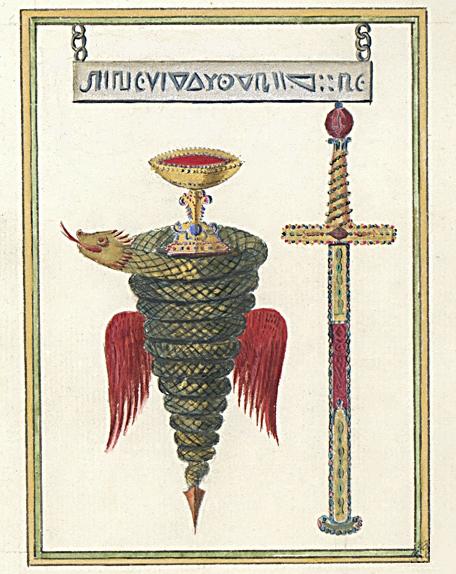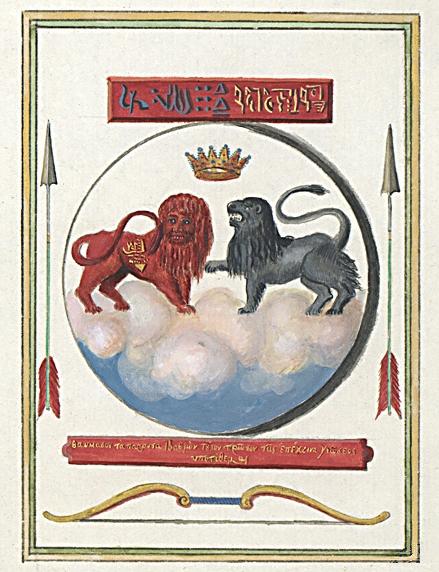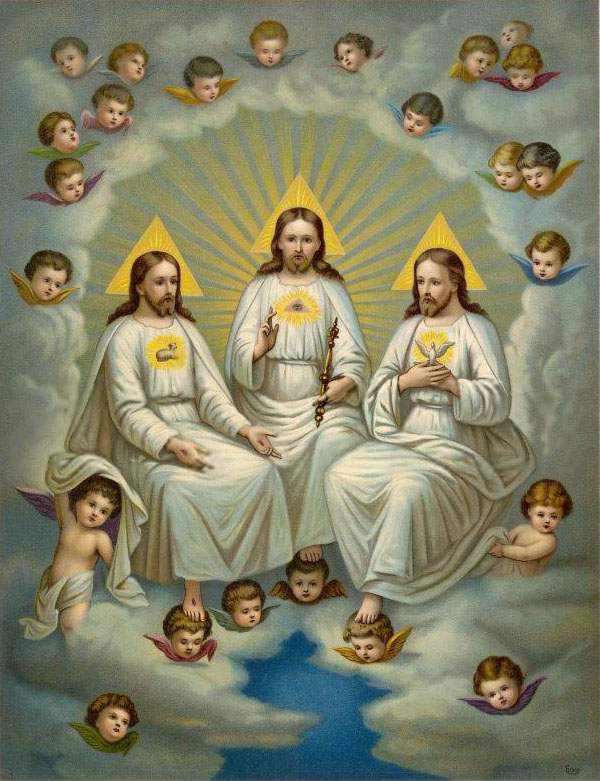Azazael
"Having brought the goats before Yhwh at the door of the tabernacle, he cast lots for them, the one lot "for Yhwh" and the other "for Azazel." The goat that fell to Yhwh was slain as a sin-offering for the people. But the goat of Azazel (now usually known as the "scapegoat") was made the subject of a more striking ceremony. The high priest laid his hands upon its head and confessed over it the sins of the people. Then the victim was handed over to a man standing ready for the purpose, and, laden as it was with these imputed sins, it was "led forth to an isolated region," and then let go in the wilderness."
in describing the order of services, sacrifices, and purifications on Yom Kippur, the Kohen Gadol (High Priest) followed:
"Lottery of the goats: At the Eastern (Nikanor) gate, the Kohen Gadol drew lots from a lottery box over two goats. One was selected “for the Lord,” and one “for Azazel.” The Kohen Gadol tied a red band around the horns of the goat “for Azazel.”
Goat for Azazel: The Kohen Gadol left the Haichal and walked to the east side of the Azarah (Israelite courtyard). Near the Nikanor Gate, he leaned his hands (Semikha) on the goat “for Azazel” and confessed the sins of the entire people of Israel. The people prostrated themselves when he pronounced the Tetragrammaton. While he made a general confession, individuals in the crowd at the Temple would confess privately. The Kohen Gadol then sent the goat off “to the wilderness.” In practice, to prevent its return to human habitation, the goat was led to a cliff outside Jerusalem and pushed off its edge.
Preparation of sacrificial animals: While the goat “for Azazel” was being led to the cliff, the Kohen Gadol removed the insides of the bull, and intertwined the bodies of the bull and goat. Other people took the bodies to the Beit HaDeshen (place of the ashes). They were burned there after it was confirmed that the goat “for Azazel” had reached the wilderness. "
" A man was selected, preferably a priest, to take the goat to the precipice in the wilderness; and he was accompanied part of the way by the most eminent men of Jerusalem. Ten booths had been constructed at intervals along the road leading from Jerusalem to the steep mountain. At each one of these the man leading the goat was formally offered food and drink, which he, however, refused. When he reached the tenth booth those who accompanied him proceeded no further, but watched the ceremony from a distance. When he came to the precipice he divided the scarlet thread into two parts, one of which he tied to the rock and the other to the goat's horns, and then pushed the goat down (Yoma vi. 1-8). The cliff was so high and rugged that before the goat had traversed half the distance to the plain below, its limbs were utterly shattered. Men were stationed at intervals along the way, and as soon as the goat was thrown down the precipice, they signaled to one another by means of kerchiefs or flags, until the information reached the high priest, whereat he proceeded with the other parts of the ritual.
The scarlet thread is symbolically referenced in Isa. i. 18; and the Talmud states (ib. 39a) that during the forty years that Simon the Just was high priest, the thread actually turned white as soon as the goat was thrown over the precipice: a sign that the sins of the people were forgiven. In later times the change to white was not invariable: a proof of the people's moral and spiritual deterioration, that was gradually on the increase, until forty years before the destruction of the Second Temple, when the change of color was no longer observed (l.c. 39b)."
Wednesday, February 9, 2011
Tuesday, February 1, 2011
Monday, January 31, 2011
seth
reading:

"He said the first Sufi was a son of Adam, namely, Shith 'alayhi as-salam or Seth, who was a sibling of Cain and Abel ... Seth is remembered as a prophet among the children of Adam and Eve. But in a parallel body of traditional lore he has another significance and another name. He is called Agathedaemon.
Now, Agathadaemon is remembered in this parallel tradition as the teacher of Hermes Trismegistus."
--Green Hermeticism: Alchemy and Ecology
In gnosticism, Seth is seen as a replacement given by God for Abel, whom Cain had slain. It is said that late in life, Adam gave Seth secret teachings that would become the kabbalah. The Zohar refers to Seth as "ancestor of all the generations of the tzaddikim" (Hebrew: righteous ones).
"The wickedness of Cain is repeated in Ham. But the descendants of both are shown as the wisest of races on earth; and they are called on this account 'snakes', and the 'sons of snakes', meaning the sons of wisdom, and not of Satan, as some divines would be pleased to have the world understand the term. Enmity has been placed between the 'snake' and the 'woman' only in this mortal phenomenal 'world of man' as 'born of woman'.
Before the carnal fall, the 'snake' was Ophis, the divine wisdom, which needed no matter to procreate men, humanity being utterly spiritual. Hence the war between the snake and the woman, or between spirit and matter."
- M. P. Blavatsky, Isis Unveiled


"He said the first Sufi was a son of Adam, namely, Shith 'alayhi as-salam or Seth, who was a sibling of Cain and Abel ... Seth is remembered as a prophet among the children of Adam and Eve. But in a parallel body of traditional lore he has another significance and another name. He is called Agathedaemon.
Now, Agathadaemon is remembered in this parallel tradition as the teacher of Hermes Trismegistus."
--Green Hermeticism: Alchemy and Ecology
In gnosticism, Seth is seen as a replacement given by God for Abel, whom Cain had slain. It is said that late in life, Adam gave Seth secret teachings that would become the kabbalah. The Zohar refers to Seth as "ancestor of all the generations of the tzaddikim" (Hebrew: righteous ones).
"The wickedness of Cain is repeated in Ham. But the descendants of both are shown as the wisest of races on earth; and they are called on this account 'snakes', and the 'sons of snakes', meaning the sons of wisdom, and not of Satan, as some divines would be pleased to have the world understand the term. Enmity has been placed between the 'snake' and the 'woman' only in this mortal phenomenal 'world of man' as 'born of woman'.
Before the carnal fall, the 'snake' was Ophis, the divine wisdom, which needed no matter to procreate men, humanity being utterly spiritual. Hence the war between the snake and the woman, or between spirit and matter."
- M. P. Blavatsky, Isis Unveiled

Friday, January 28, 2011
La Très Sainte Trinosophie



The various texts are written in Chaldean Hebrew, Ionic Greek, Arabic, Syriac, cuneiform, Greek hieroglyphics, and ideographs. The keynote throughout this material is that of the approach of the age when the Leg of the Grand Man and the Waterman of the Zodiac shall meet in conjunction at the equinox and end a grand 400,000-year cycle. This points to a culmination of eons, as mentioned in the Apocalypse: "Behold! I make a new heaven and a new earth," meaning a series of new cycles and a new humanity.
--Manly P. Hall
the agony of birth

This beautiful print depicts a Rosicrucian Crucifixion symbolizing Man, crucified, passes through death upon the symbol of life and attains to life upon the symbol of death.
As Manly P. Hall says, “The break between the Self and the not-self is thus complete and the spirit, emerging from its chrysalis, leaves the empty shell behind as the token of its attainment. The agony of the Savior is not the agony of death but the agony of birth. Only to him who has found his life by losing it is the mystery comprehensible.”

Tuesday, January 25, 2011
Thursday, January 13, 2011
Subscribe to:
Posts (Atom)








